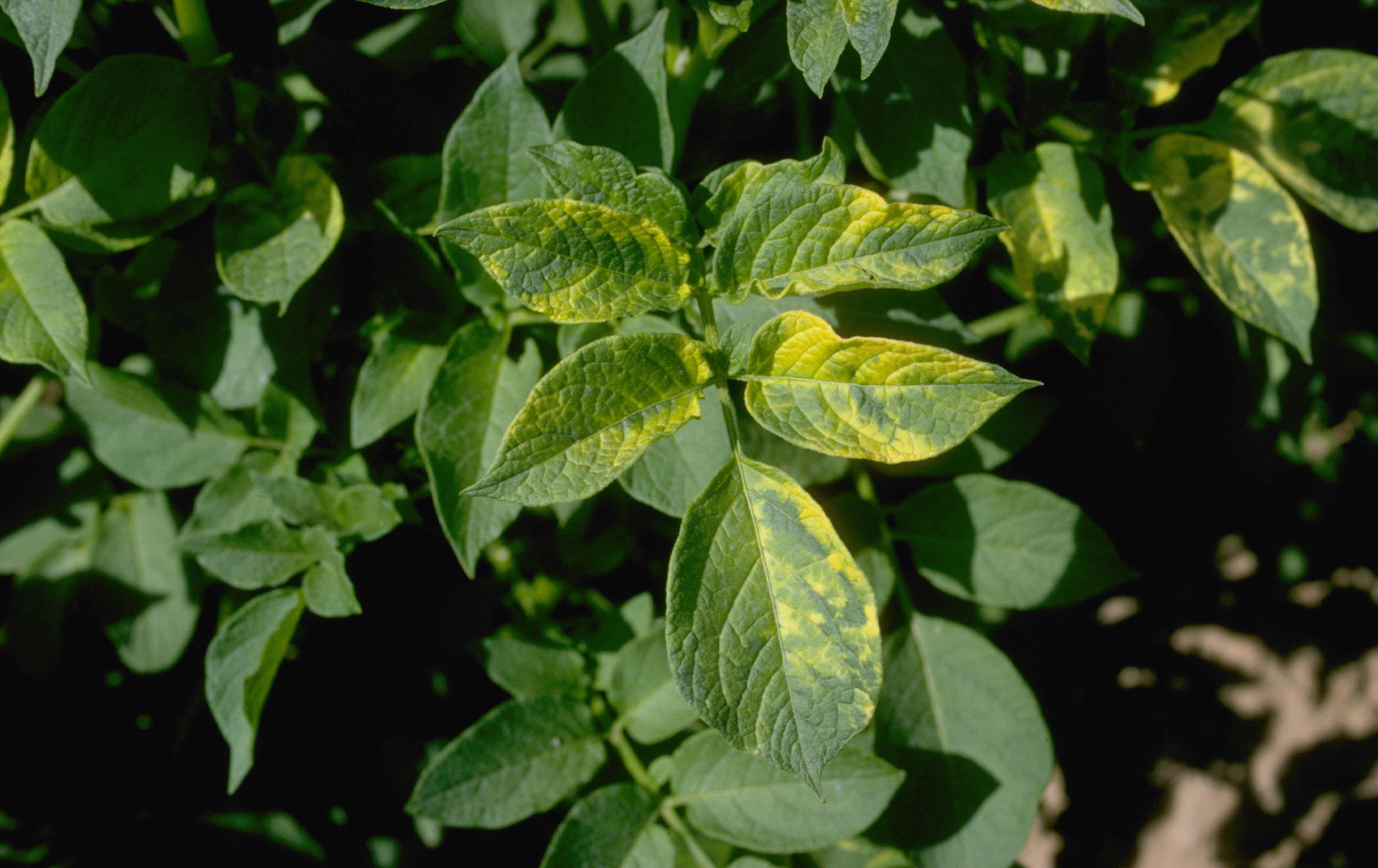
Tobacco mosaic
Tobacco mosaic virus Â
What is Tobacco mosaic (Tobacco mosaic virus)?
The Tobacco mosaic virus (TMV) is a plant virus that affects various plants, including tobacco, tomato, and other solanaceous plants. It is one of the most well-known and extensively studied viruses in the world. It is distributed worldwide and can cause significant economic losses in affected crops. Symptoms induced by TMV vary but commonly include mosaic patterns, mottling, necrosis, stunting, leaf curling, and yellowing of plant tissues. The severity of symptoms depends on factors such as the host plant's genetic background, environmental conditions, and the virus strain.
How does Tobacco mosaic (Tobacco mosaic virus) occur?
The tobacco mosaic virus (TMV) reproduces by entering plant cells through small wounds. Once inside, it uses its genetic material to make proteins that help it replicate. These proteins create new copies of the virus, which can then infect nearby cells or spread throughout the entire plant. TMV is easily transmitted between plants through direct contact or contaminated tools.
Symptoms
1 - Plant Health
• TMV can cause significant damage to infected plants, causing disruptions to the plant's metabolism, and leading to reduced growth, yield, and overall plant health. • It can negatively impact the plant's ability to photosynthesize and obtain nutrients.
2 - Soil Contamination
• TMV can contaminate the soil through infected plant debris or seeds, potentially leading to prolonged persistence of the virus in the environment. • Infected plant residues left in the soil can act as a reservoir for TMV, posing a risk of future infections.
3 - Biodiversity and Ecosystems
• Outbreaks of TMV can have implications for biodiversity, as they can impact the growth and survival of susceptible plant species. • Disruption of plant communities due to TMV infection may affect ecological interactions and food webs. • TMV can disrupt the ecological balance in agricultural ecosystems by affecting the growth and productivity of crops.
Solutions
1 - Prevention
• Use disease-free seeds or certified virus-free transplants from reliable sources. • Practice good sanitation by removing and destroying infected plants, debris, and weeds to reduce the virus reservoir. • Clean and disinfect tools, equipment, and greenhouse surfaces to prevent transmission. • Avoid smoking or handling tobacco near susceptible plants, as tobacco can carry TMV. • Implement crop rotation to reduce the buildup of TMV in the soil. • Use physical barriers like insect-proof screens or netting to prevent contact between healthy and infected plants.
2 - Cultural and Management Practices
• Plant resistant varieties when available. Resistant cultivars can provide effective protection against TMV. • Avoid working in the field when plants are wet to minimize the risk of virus spread. • Practice proper irrigation and fertilization techniques to promote plant health and reduce stress. • Remove and destroy weeds that can act as alternative hosts for TMV.
3 - Biological Control
• Implement beneficial insects and organisms that can help control TMV-transmitting pests, such as aphids or whiteflies. • Use biopesticides or microbial agents specifically designed to target viral infections. • Develop genetically modified plants with resistance to TMV by introducing specific genes that confer immunity or reduce virus replication.
4 - Chemical Control
• Chemical control options for TMV are limited, as there are no specific chemical treatments available. • However, systemic insecticides can help control insect vectors responsible for TMV transmission.
